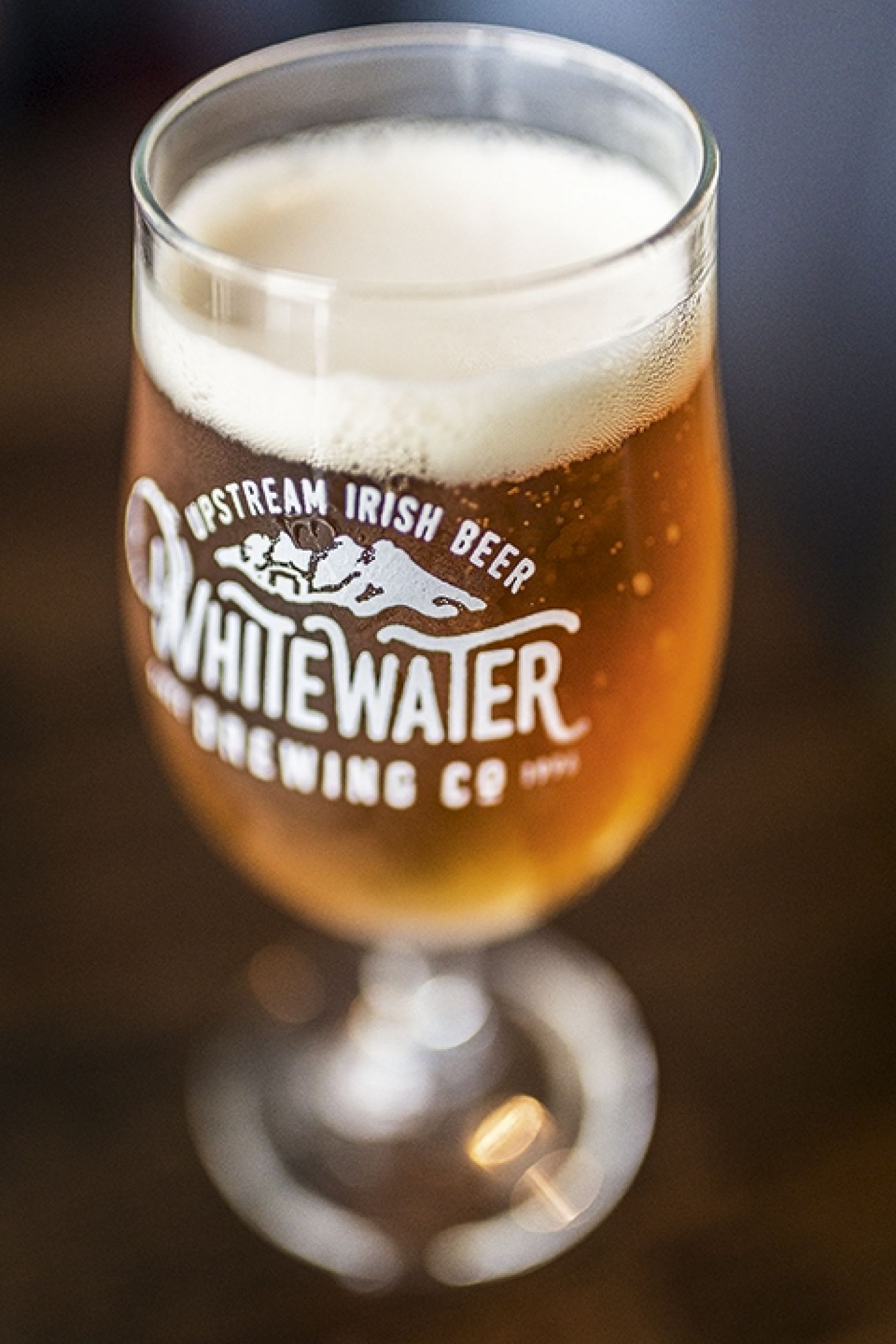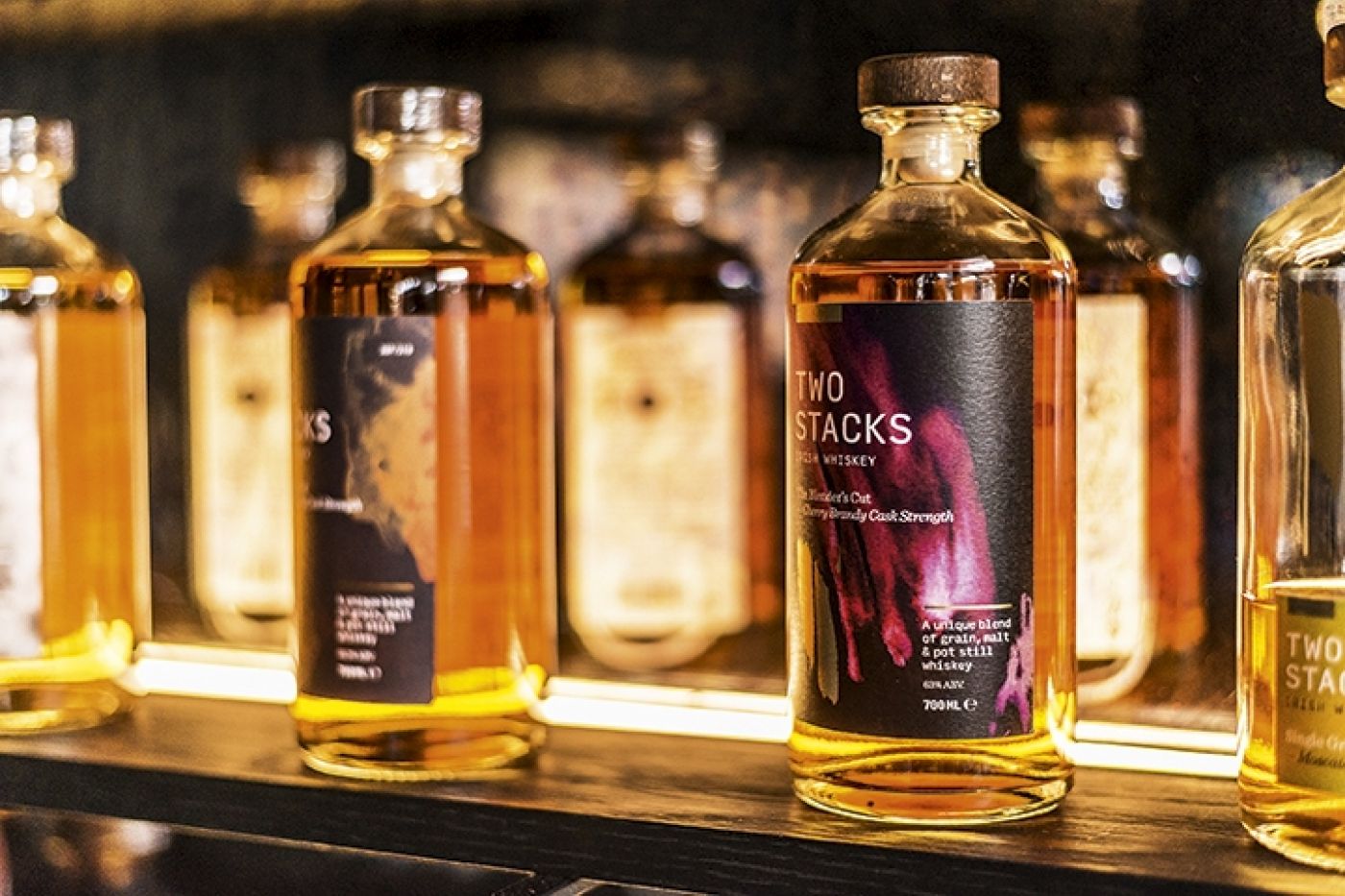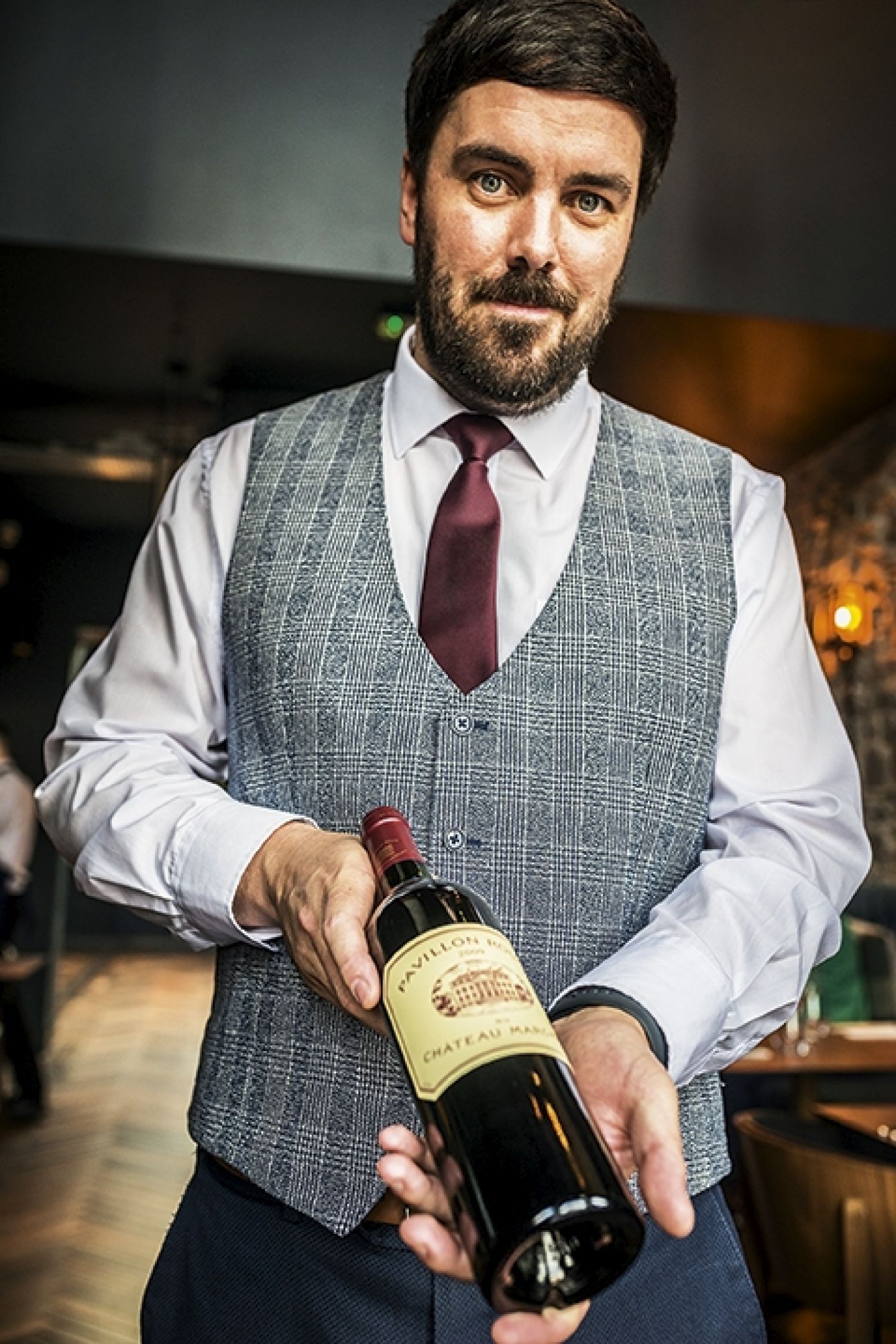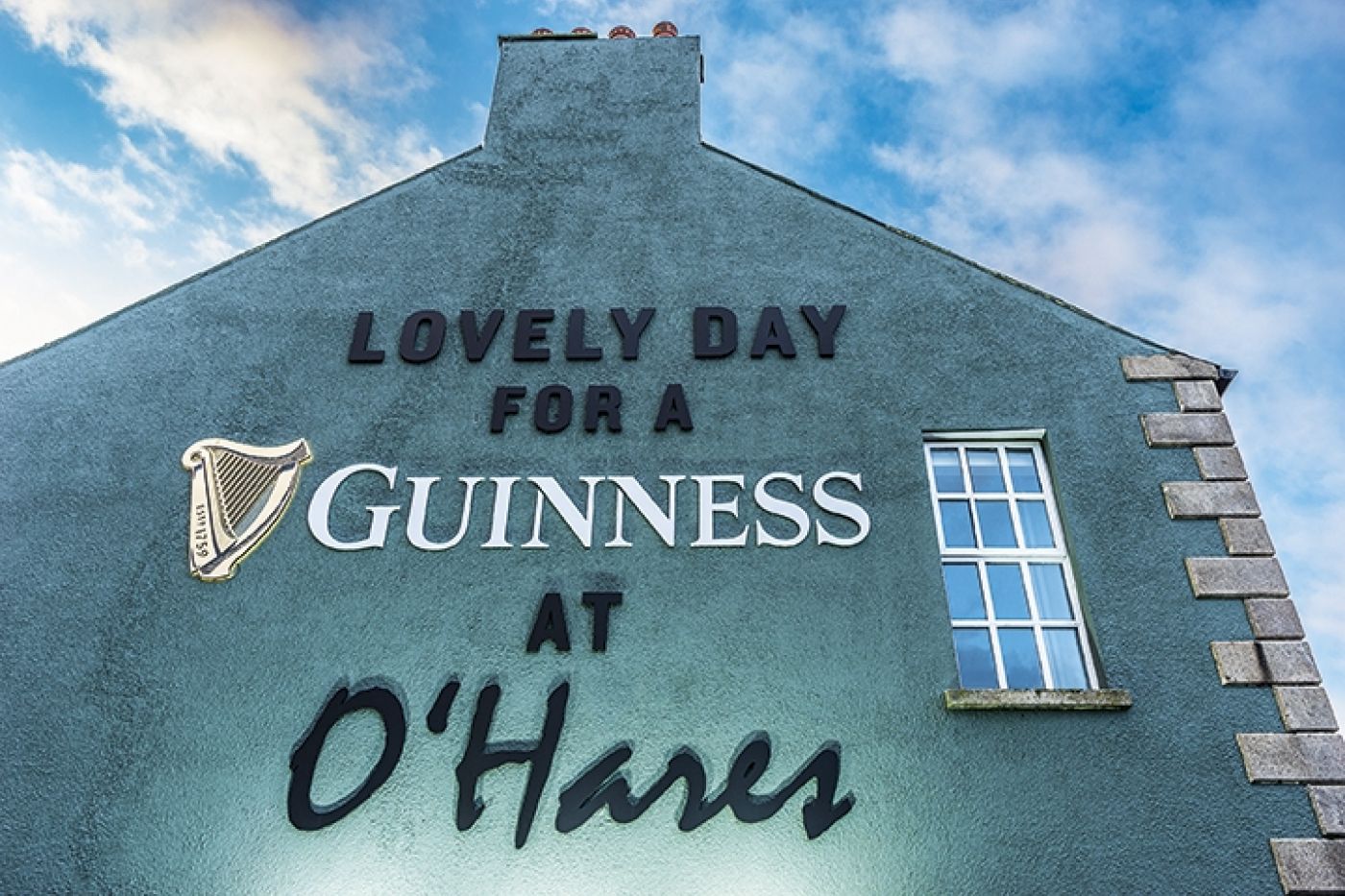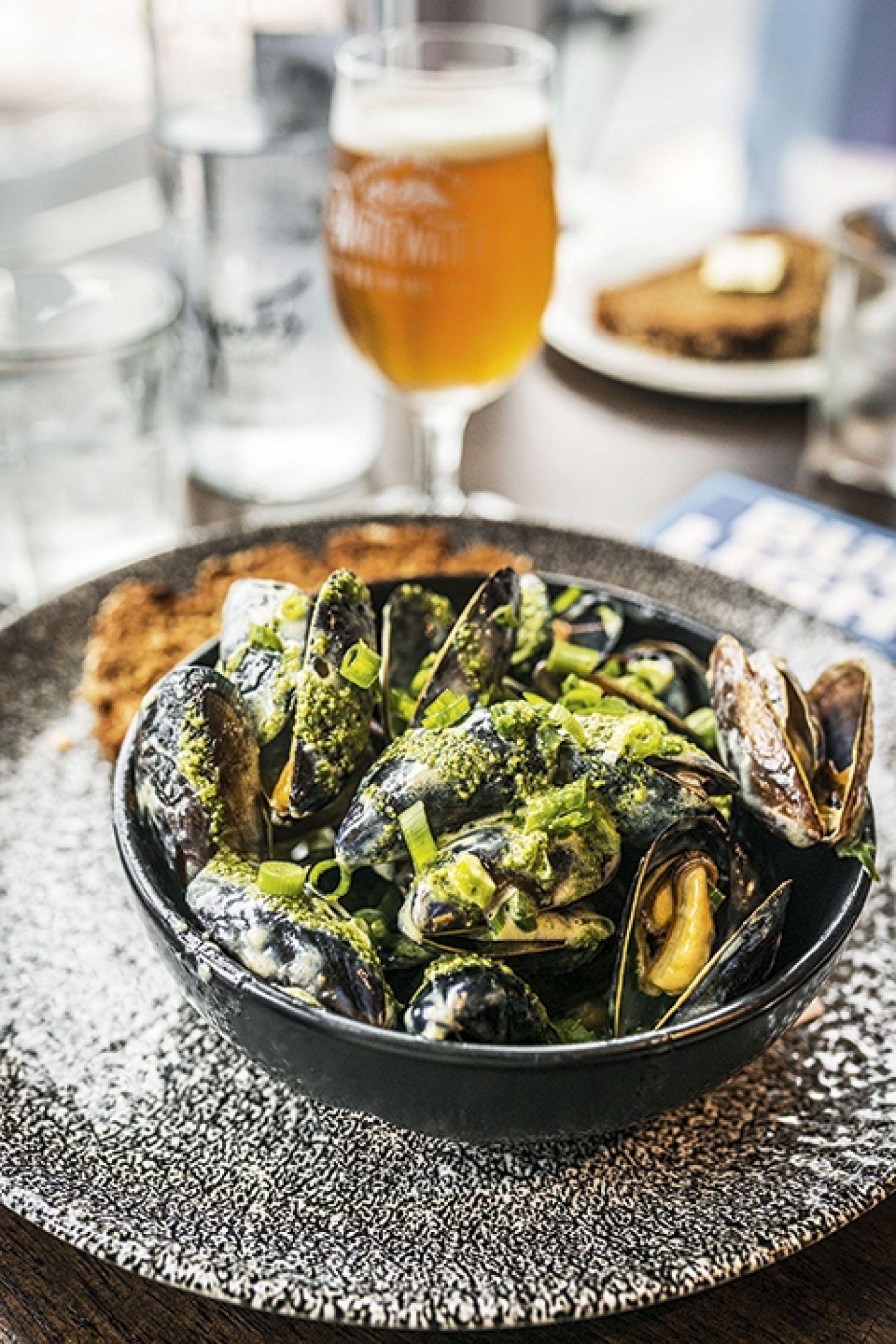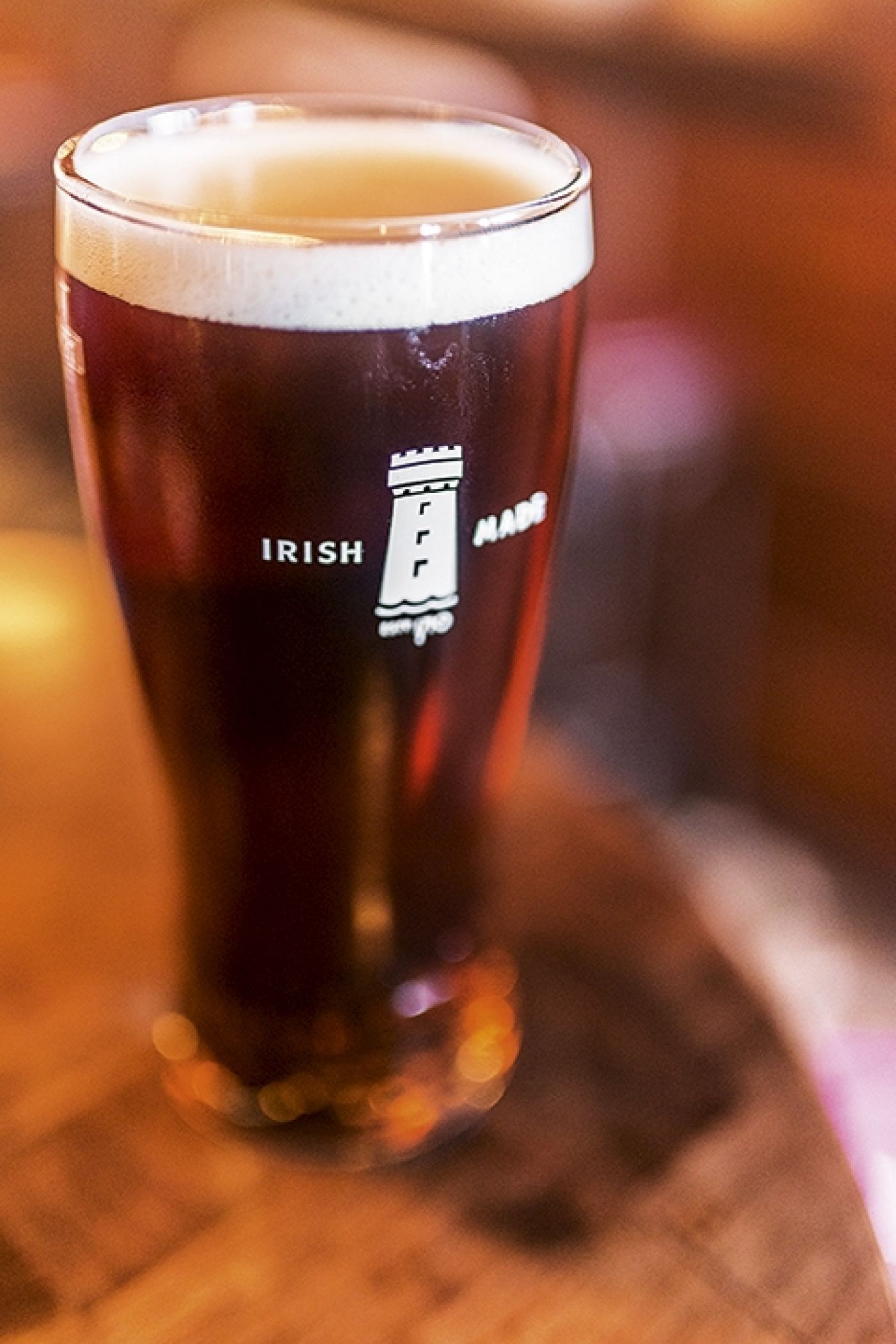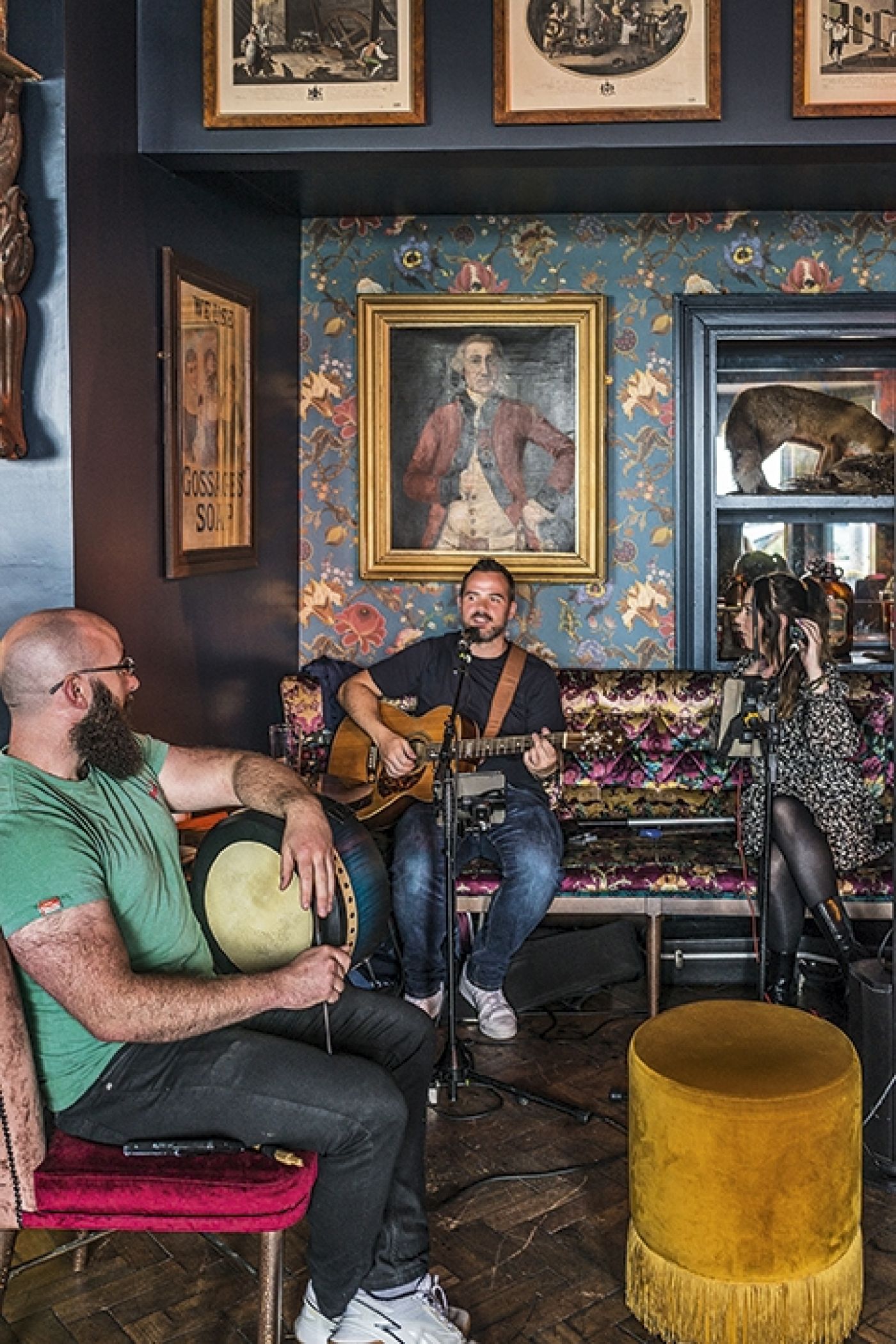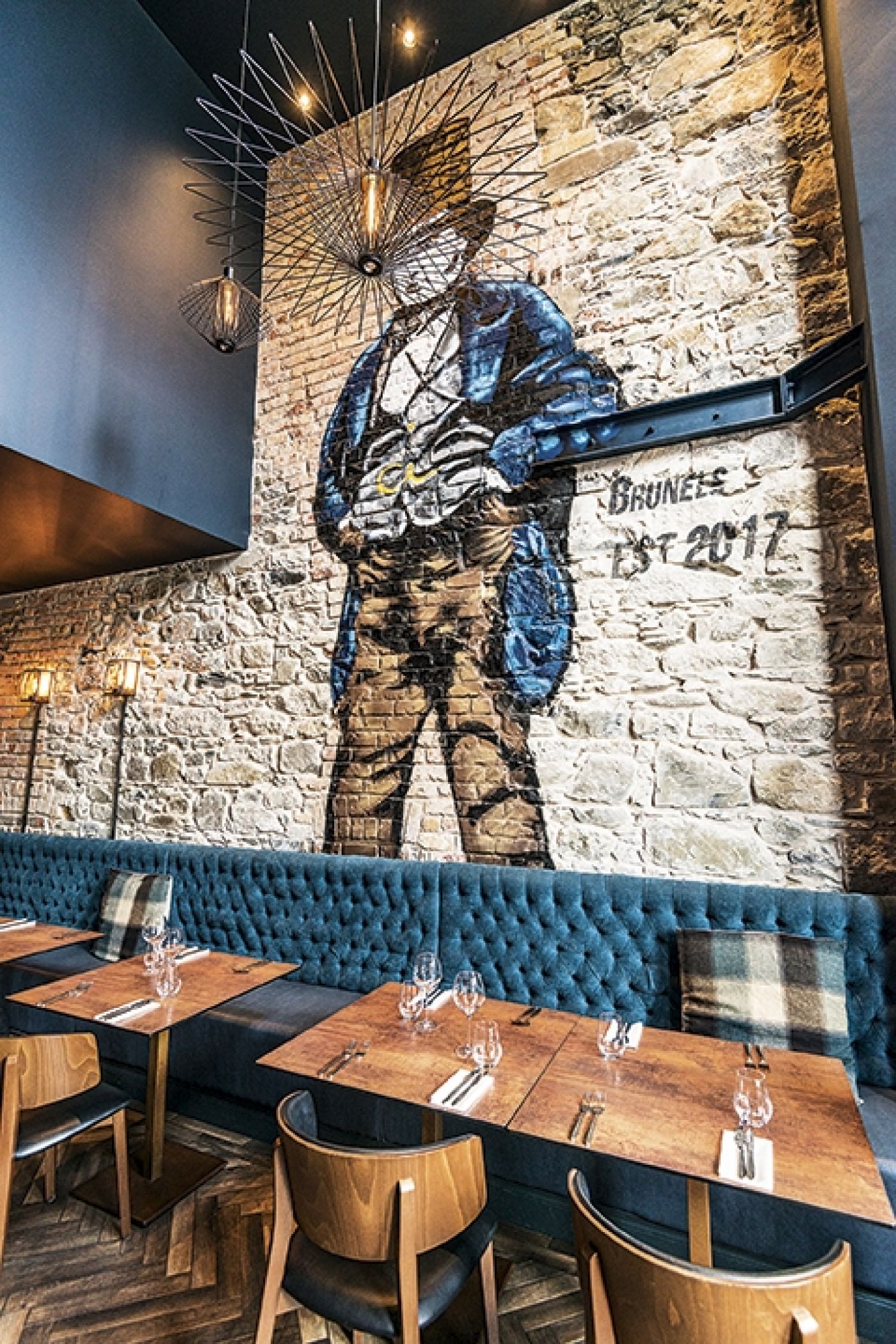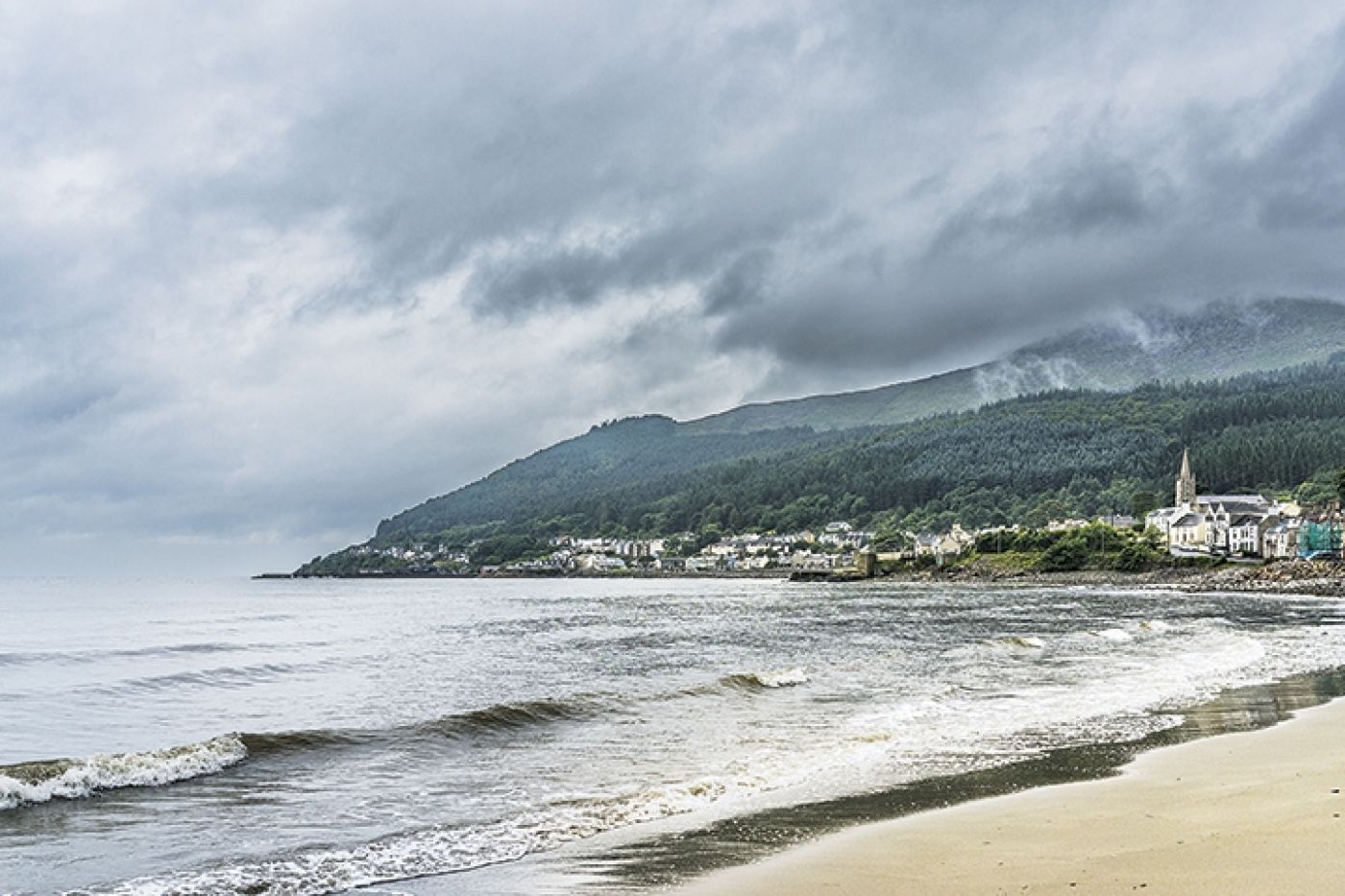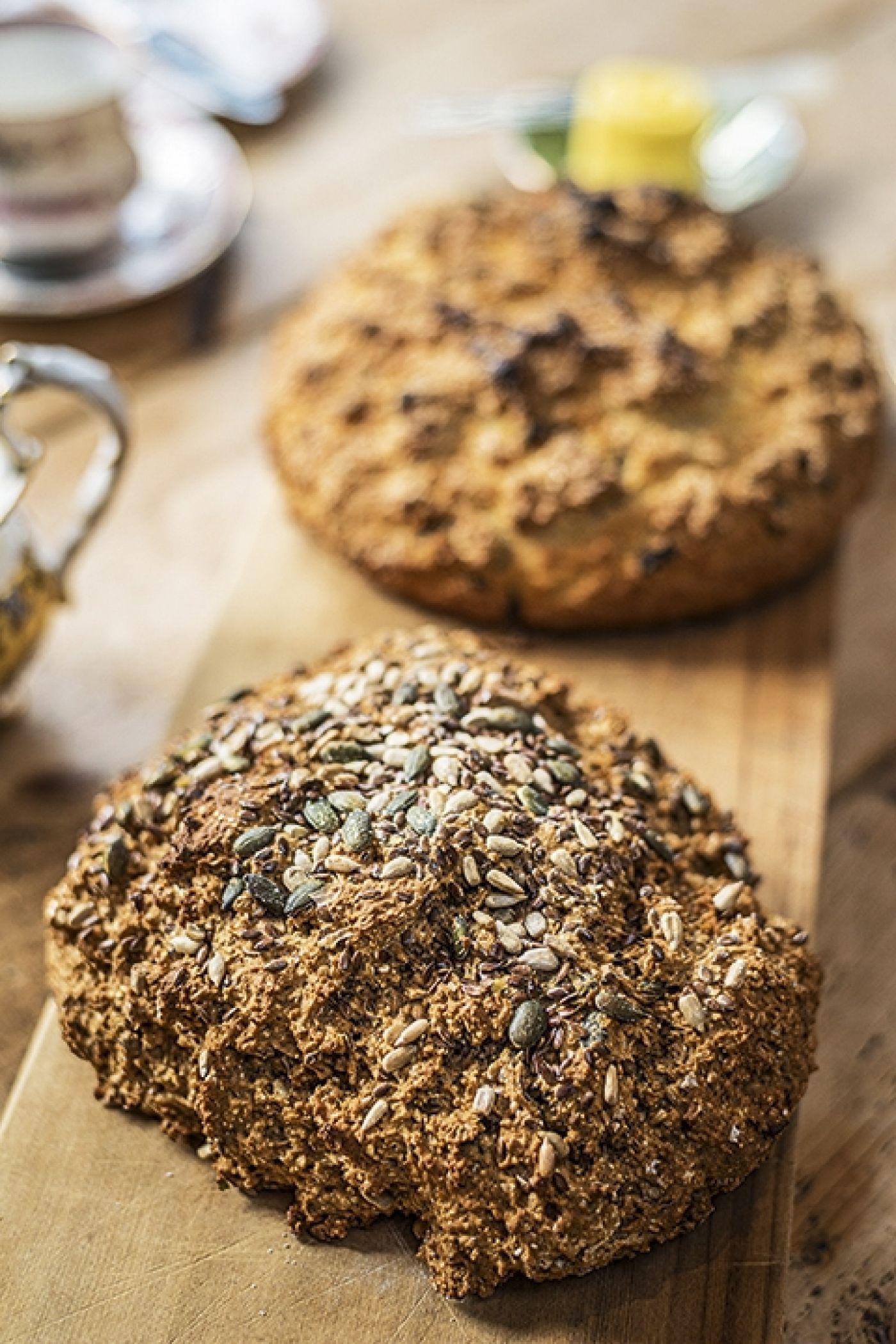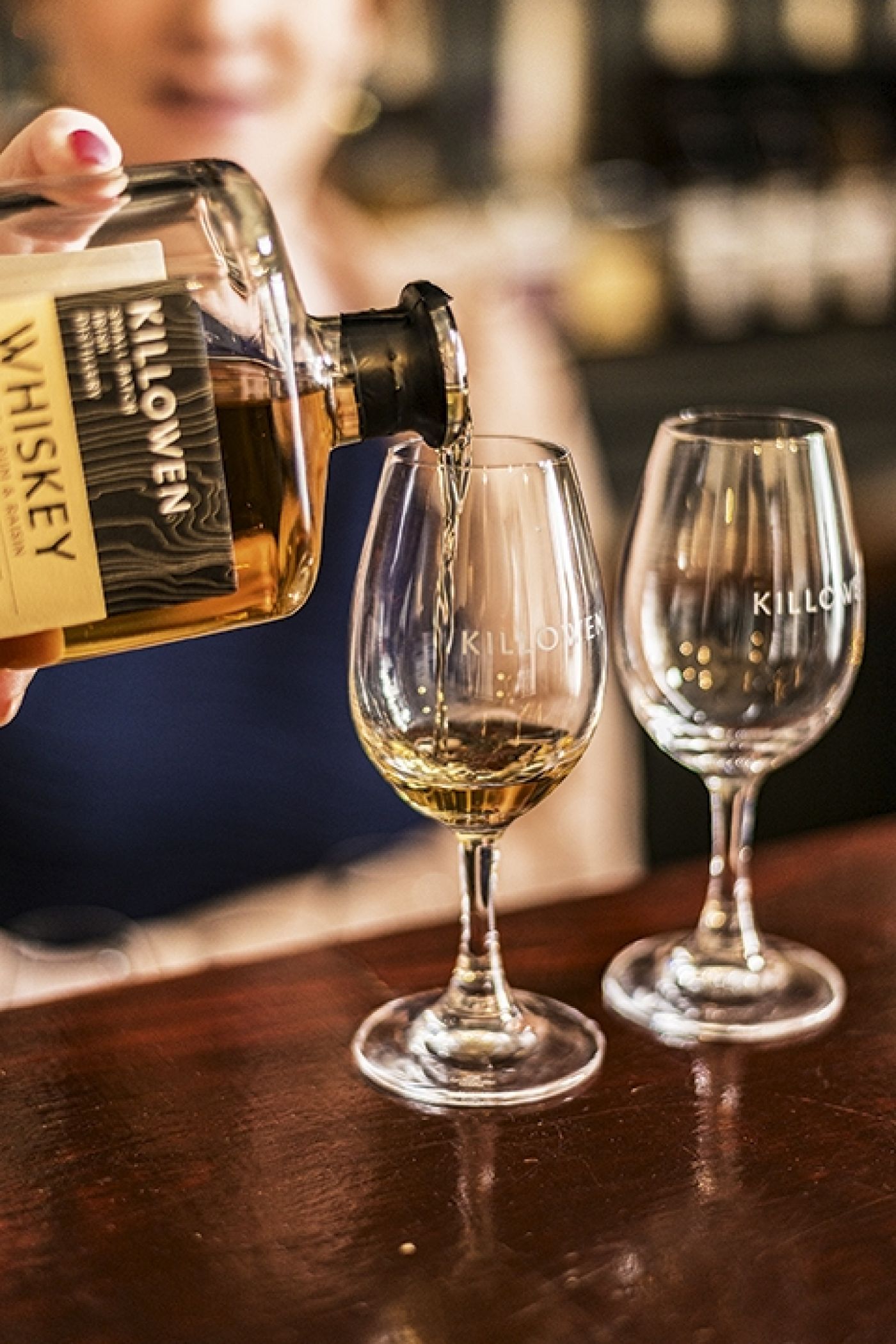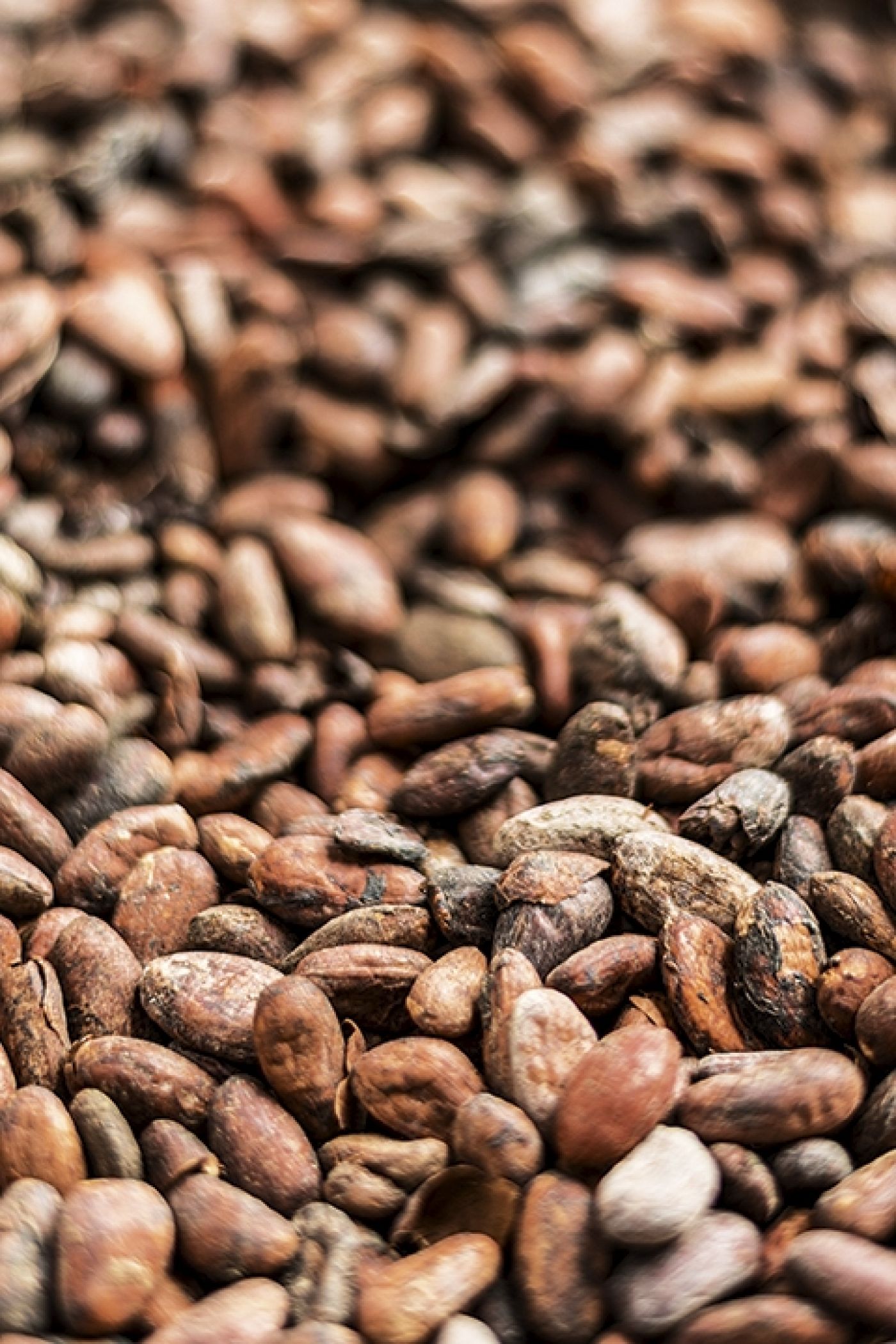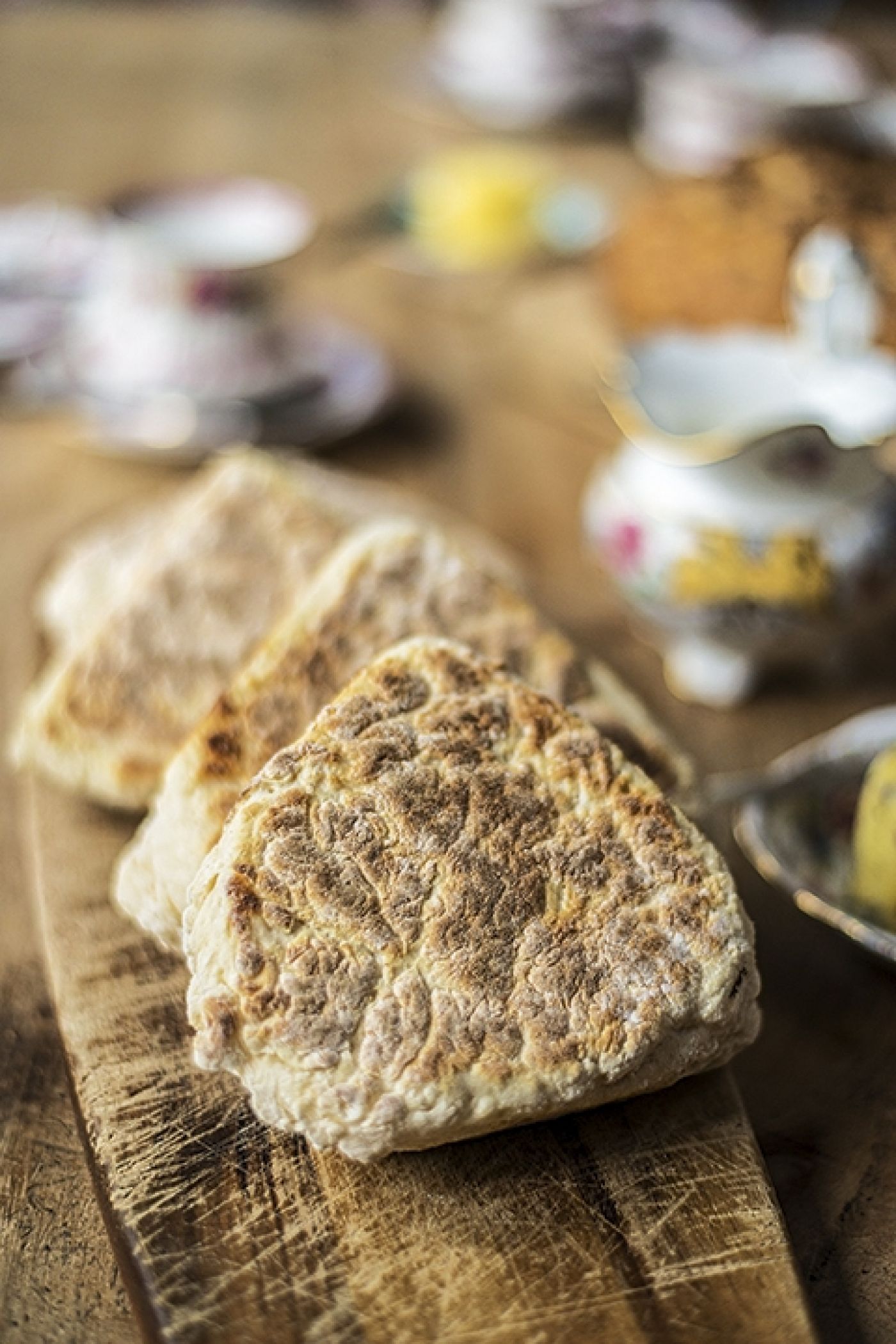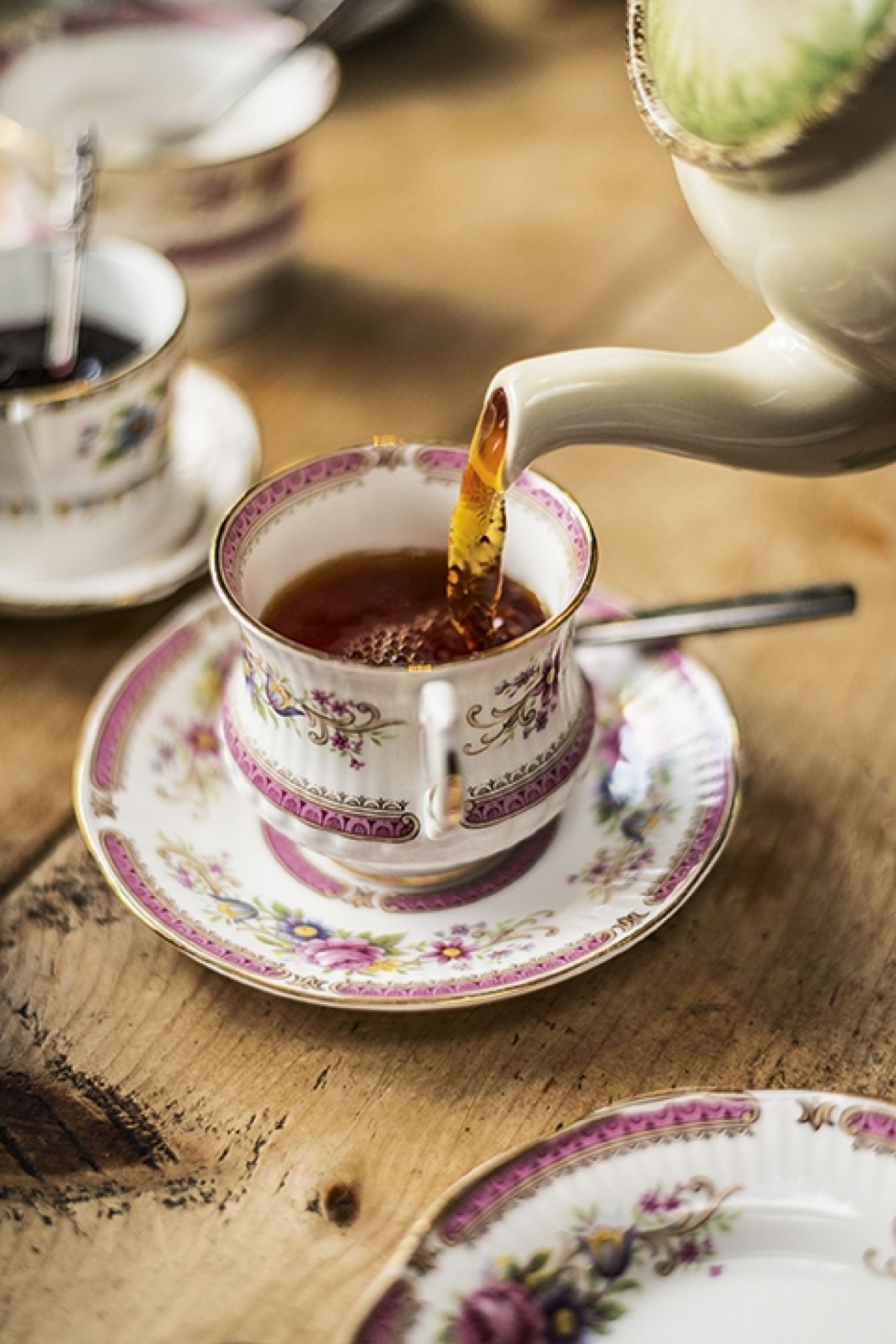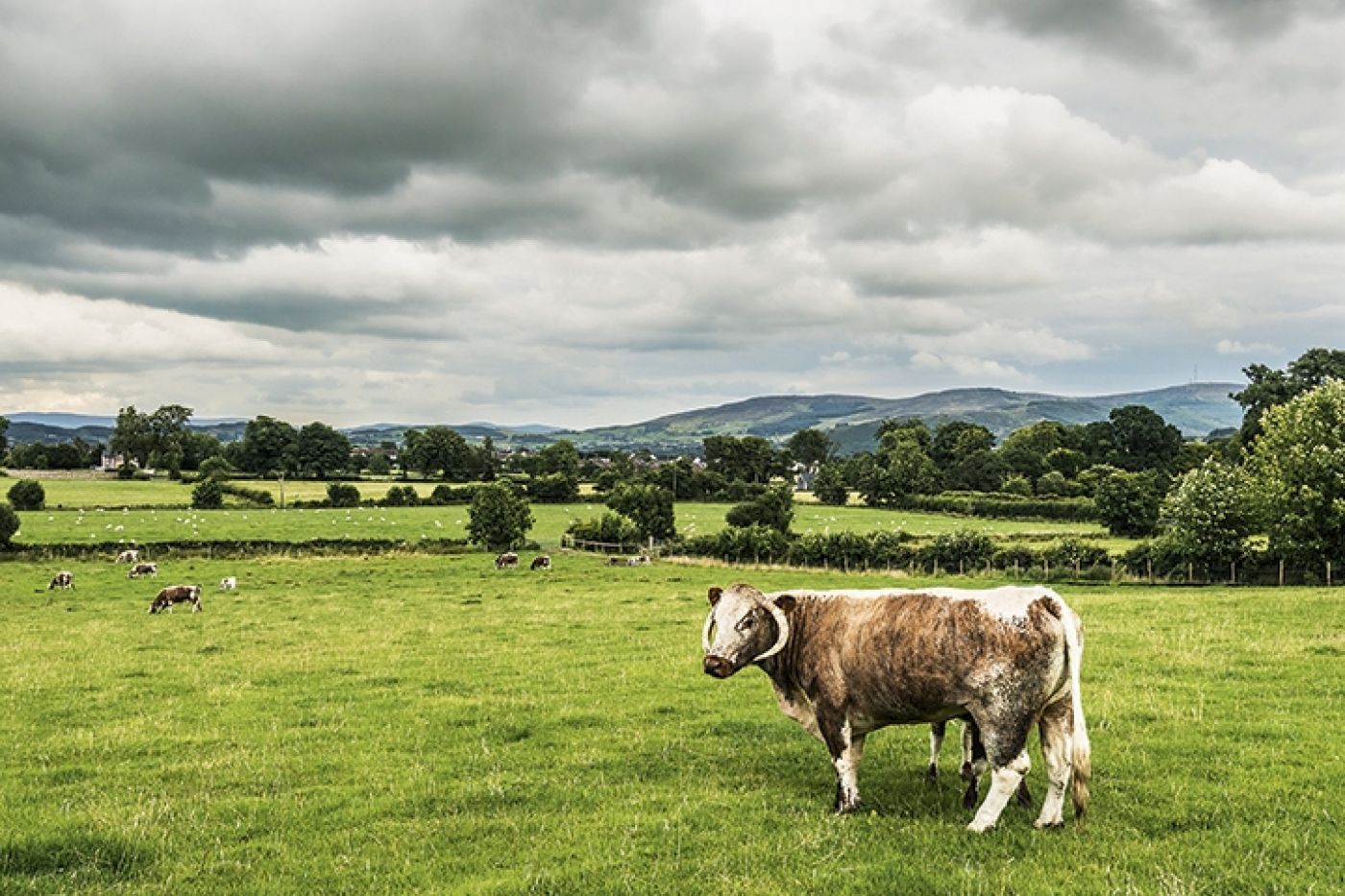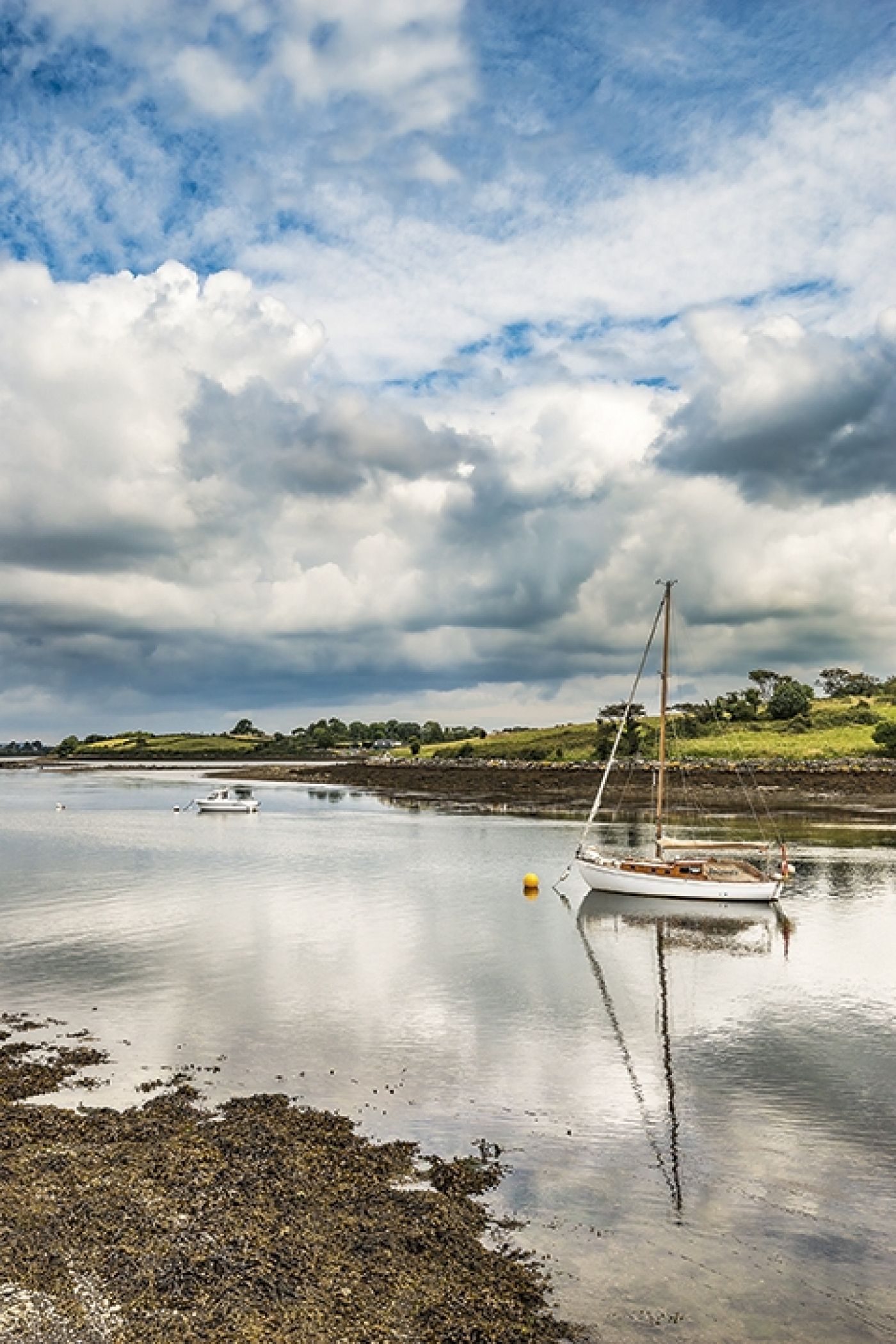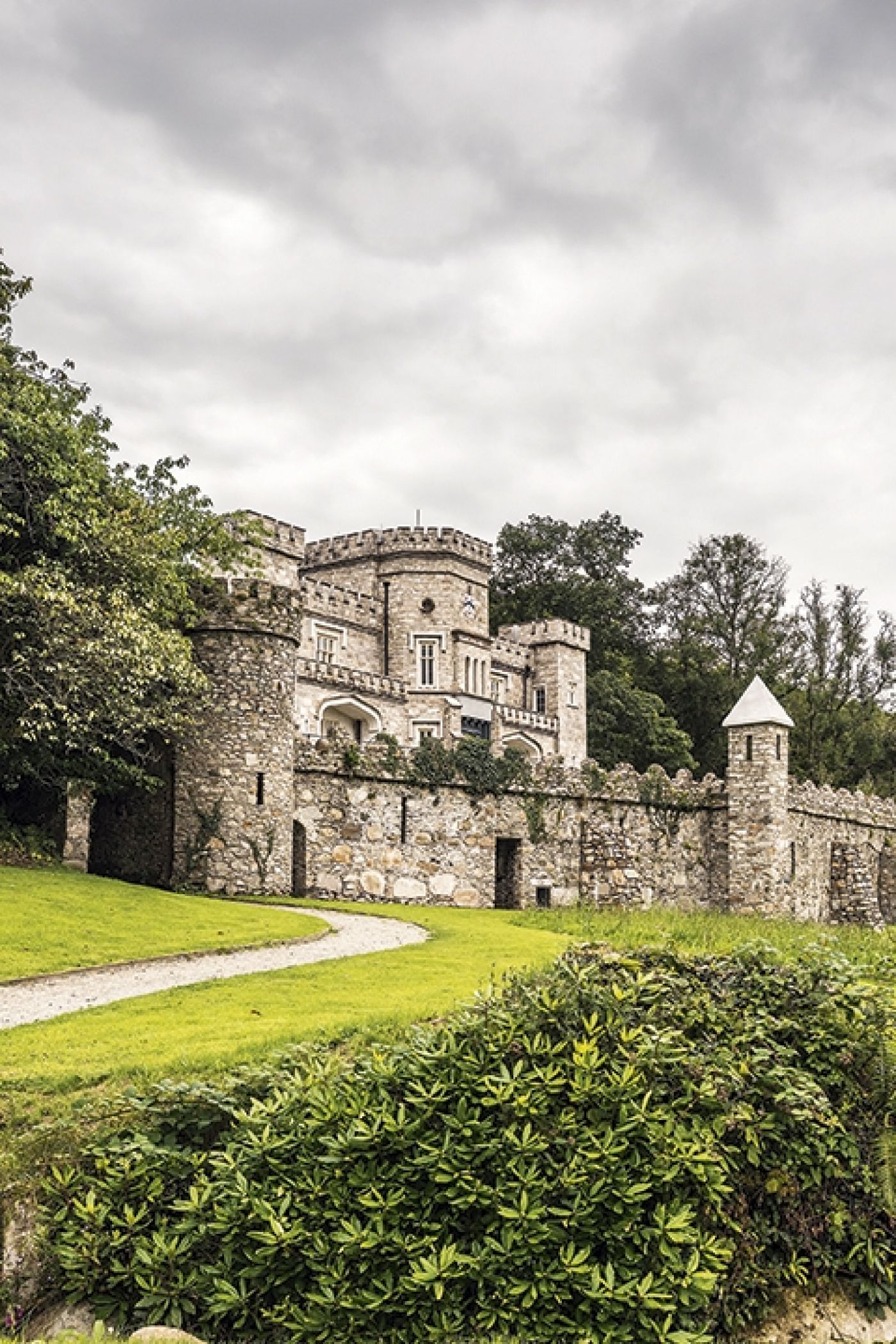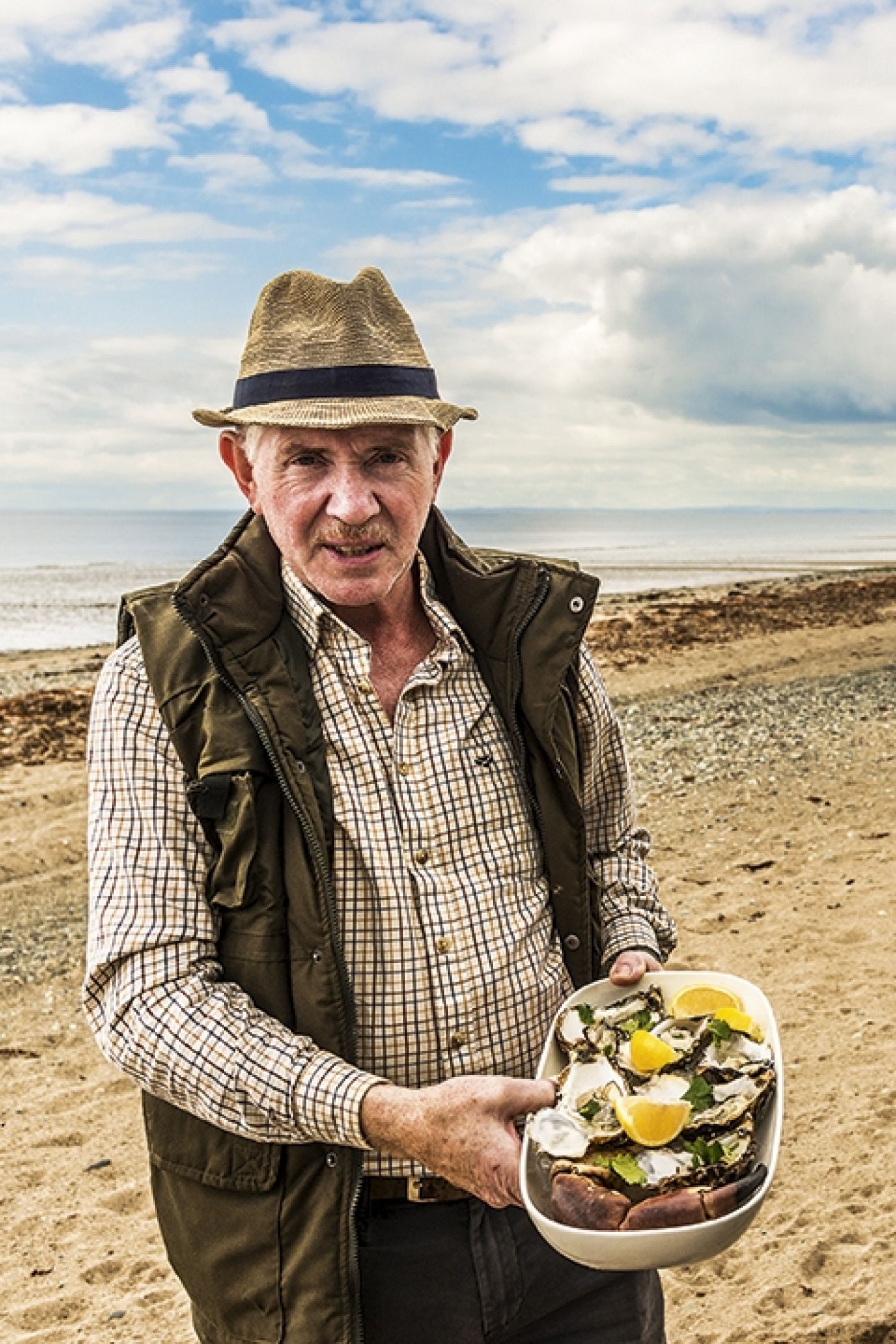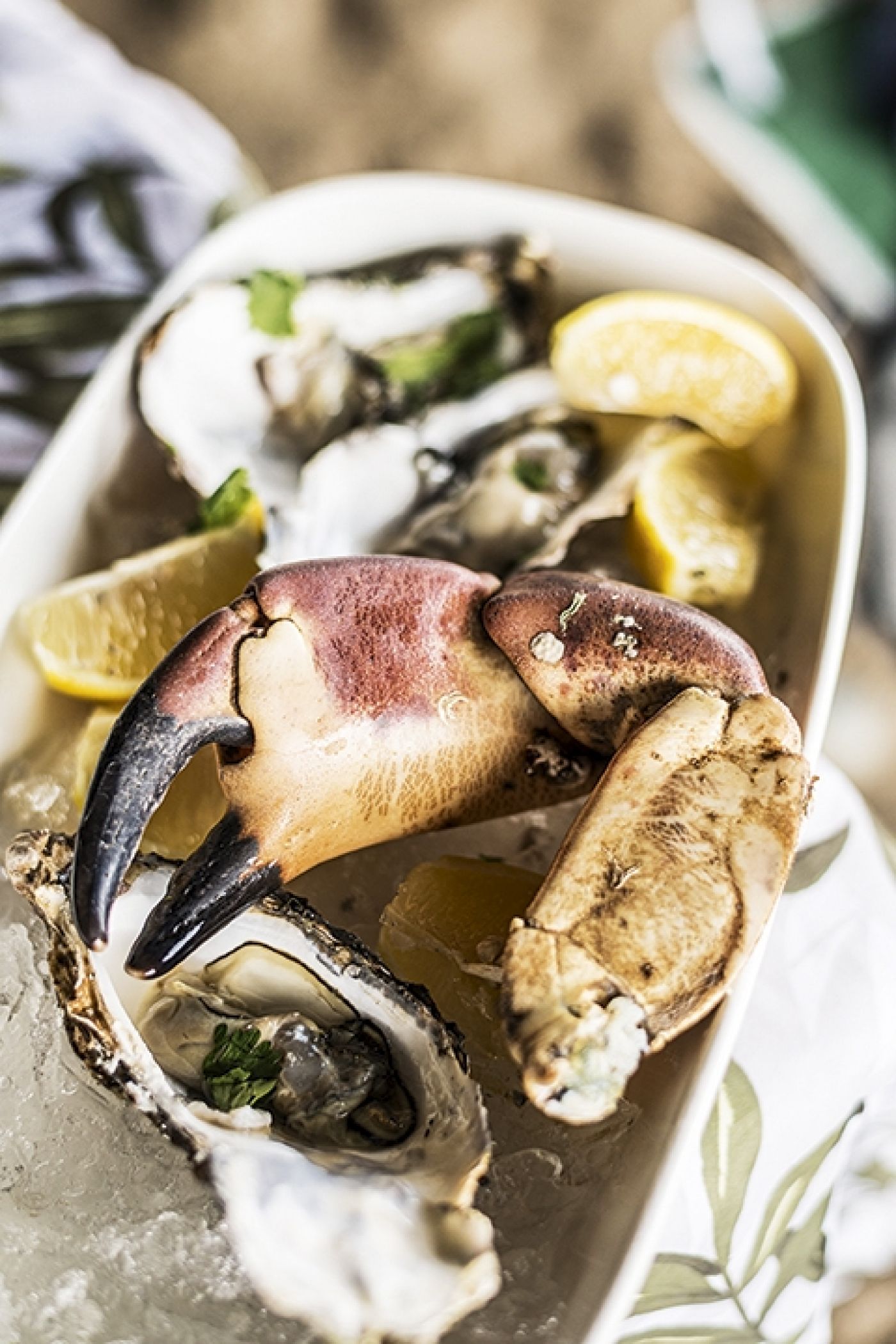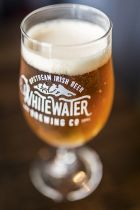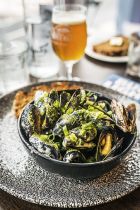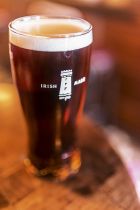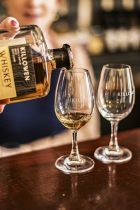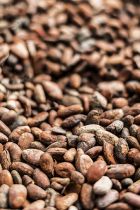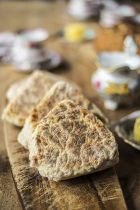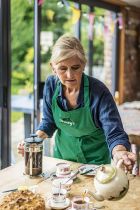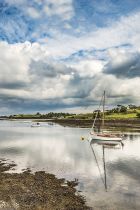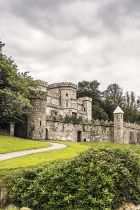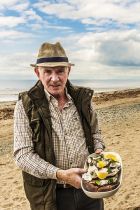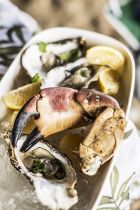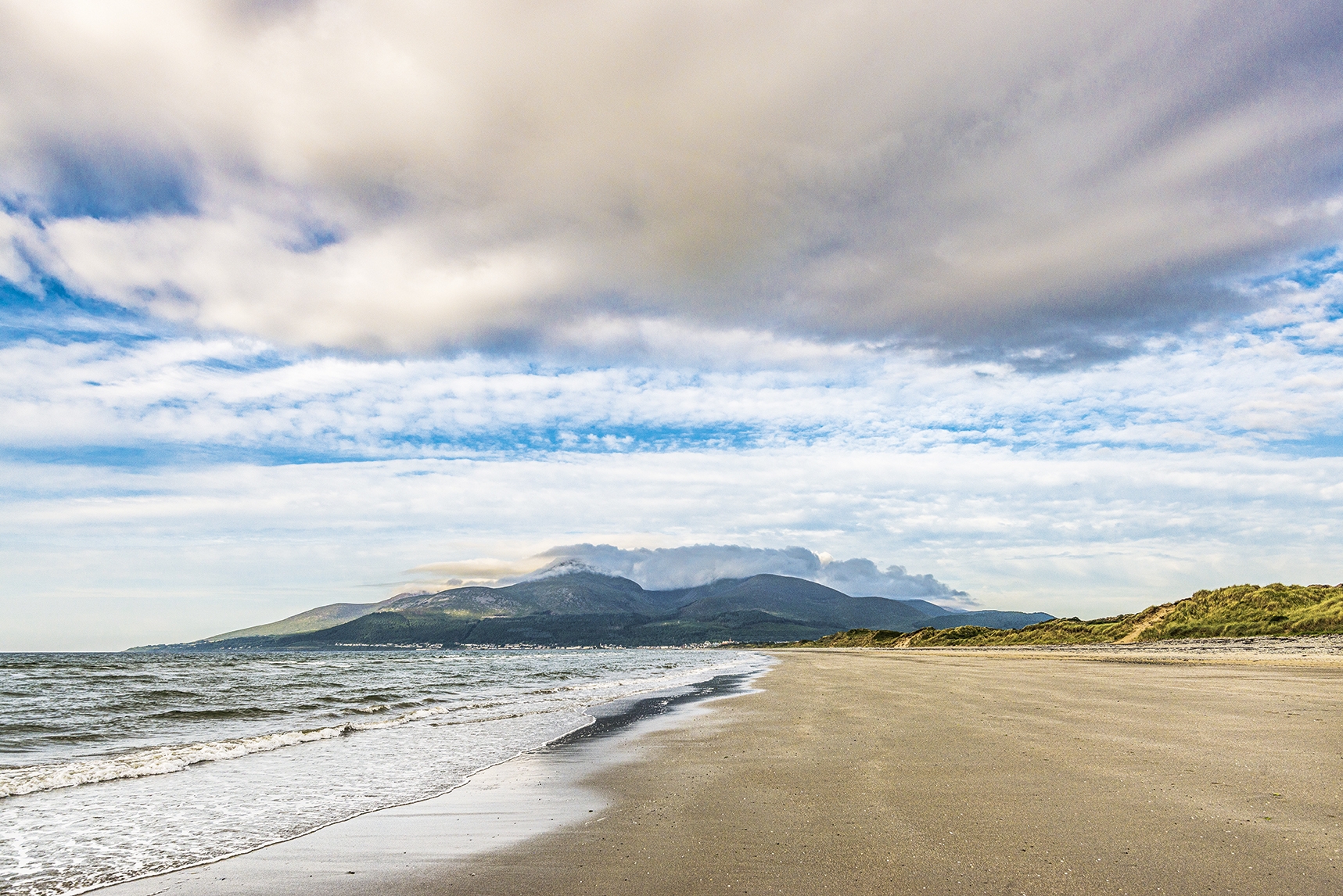
Food and Travel Review
‘On the granite mountain slopes, wind-blown trees and shoulder-high walls made with huge stones arranged with astonishing mathematical precision surround tiny fields in all shades of emerald green’

Small clusters of guillemots, squawking herring-gulls and four gangly, long-legged herons fly low over a sea gently lapping the long, sandy curve of Nicholsons Strand beach. Perching on a stout, well-worn wooden groyne, watchful cormorants stretch their wings; further out to sea, sharp-eyed gannets rise high to spot fish and dive into the water like feathered rockets. ‘Sea water is cleaner here because this is where underwater springs made by the Mournes’ streams enter the sea,’ says ace beach forager Michelle Wilson. ‘For my work, I depend on the tides, as I collect edible seaweeds (Gaelic, feamainn) from below the waterline, not onshore; I start harvesting on St Patrick’s Day (17 March), pause for two months at the end of June because there’s too much summer algae, and stop when the winter storms arrive in November.’
Locally raised Michelle was a child when she began beach foraging, first for crabs, now too for iodine-rich, bright-green sea lettuce, thong-like sea-spaghetti, sugar kelp – which, when dried, develops a sugary coating on its large, ruffled blades – dillisk or dulse, and Irish moss, a nutritious thickener used in traditional puddings. From the seaweed-covered rocks exposed by the retreating tide, she collects laver and stays alert for the small, giveaway holes in the sand made by burrowing razor shells.
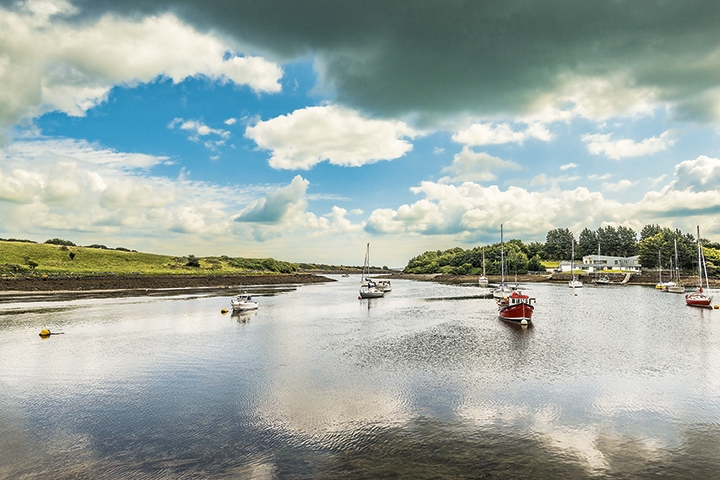
There are 11km of undulating, sandy beaches in south County
Down (Contae an Dúin; dún is a fort), where the beautiful Mourne
mountains or Na Beanna Boirche, known locally as the Mournes,
sweep down towards the Irish Sea. Fishermen land their sea catch
of herring, plaice, monkfish, haddock, mackerel and gurnard, plus
shellfish – oysters, mussels, scallops – from adjacent Carlingford
Lough in the nearby commercial fishing port of Kilkeel, while, a few
km north, the now little-used harbour walls of tiny Annalong are
home to nesting guillemots. A bus with wonderful top-deck views
travels from Newcastle, 16km north of Annalong, to Kilkeel along
the narrow road between the mist-shrouded Mournes and the sea.
On the granite mountain slopes, wind-blown trees and shoulder- high walls made with huge stones arranged with astonishing mathematical precision surround tiny fields in all shades of emerald green. Ferns and colourful fuchsia cascade down the banks of lanes leading up towards conifer-surrounded Spelga dam and 850m-high Slieve Donard (slieve, or sliabh, is a mountain). As the mountain steepens the fields stop, hillsides turn a volcanic grey and mountain tops disappear into the light cloud. In this designated Area of Outstanding Natural Beauty, one of eight in Northern Ireland, excavated ancient settlements date back to 5,500BC.
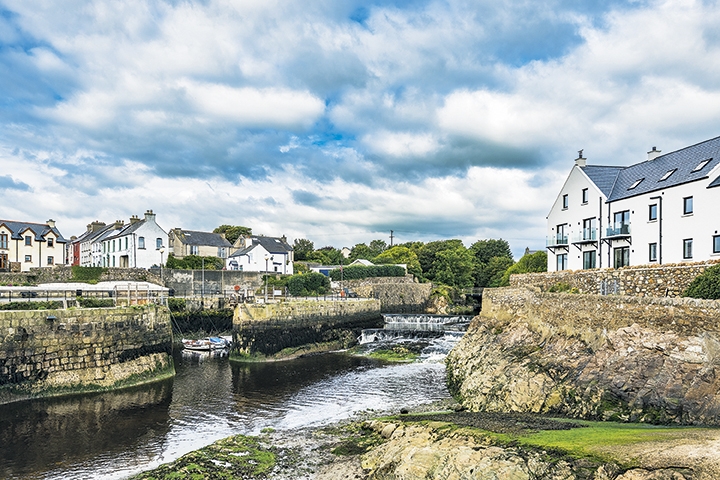
West from Kilkeel, the scenic road passes along the north side of Carlingford Lough to Killowen, and a pretty, winding lane leads up a Mourne foothill to Killowen distillery. ‘Whiskey is water and grain. We do all our milling on site, and our grains – oats, barley, some wheat – are from abroad (that is, from Louth, just across the Lough),’ distiller Shenda O’Hare clarifies with a smile; Louth is in the Irish Republic. ‘In the old days, our whiskeys would have been as varied as Scottish whiskies, but legislation has created standardisation. With our fresh mountain and sea air and two copper stills, 1,000-litre Christoir and 800-litre Broc, we’re working to bring back the old flavours, though. We can because there’s still knowledge of the old ways here.’ From 1661 to 1997 it was illegal to distil poitín, politely known as ‘mountain dew’ and more colloquially as moonshine, from malted and unmalted barley, oats and sometimes from other, more convenient, ingredients. Today, a new generation is interested in revitalising this old distillate.
The Lough Road continues through Warrenpoint, where a
15-minute ferry ride takes you to the Republic, and on to the city of
Newry (Cathair an lúir). A few kilometres south-west, seventh-
generation farmer and professional mountaineer Brian Hoey
forages on the slopes of County Armagh’s Slieve
Gullion. ‘My grandmother Annie McGuill was a highly proficient
funghi gatherer – wood blewit, razor strop, shaggy parasols,
chanterelles – and, through her, I got the bug,’ he says. ‘She died
aged 82 in the Sixties, but not before she assured me that as a
young girl, she had stood on the ‘stray sod’ – a clump of grass
bewitched by fairies – and was taken by them to the Cargas, the
rocky hillside beyond our fields where, coincidentally, some rare
plants are to be found.’ Wild foods here, in this flora-rich upland,
are woven into myth and legend. ‘She knew the medicinal and
near-magic qualities of a variety of mushrooms and toadstools and
the healing properties of many plants; lady’s mantle, for instance – also known as the angelic plant – is used to stop bleeding;
magnolia flowers for respiratory and digestive disorders,’ says Brian.
Many of these wild plants have a culinary use too: ‘Hairy
bittercress – which is neither hairy nor bitter – tastes like cress;
marsh woundwort tubers are delicious fried; and pink ragged
robin, of the carnation family, makes a decent tea,’ he continues.
‘We collect other native botanicals – angelica root, liquorice root,
wild mint leaf, coriander, fuchsia flower, juniper, rose hip, elderberry,
meadow sweet – to flavour gin and cordials; and our long tradition
of making apple cider means we can use it to preserve all sorts of
local foods too. Slieve Gullion (‘hill of the steep slope’)
is, at 573m, the highest point in the Ring of Gullion, another Area
of Outstanding Natural Beauty. It too has a plethora of neolithic
monuments, including a buriel cairn said to pre-date the pyramids.
For centuries, the dominance of large land holdings, with their man-made landscapes and fine houses, imposed on local economic, social and agricultural life, and many people left to work in British cities or further afield, those remaining surviving on knowledge passed down from their forebears. Today, these skills are proving useful to the locally owned estates that are successful in the modern world. In the kitchen of the light-filled dining room of Killeavy Castle Estate, South Armagh, chef Darragh Dooley understands his good fortune. ‘I’m surrounded by estate gardens, meadow and woodland,’ he says. ‘Potatoes, carrots, turnips and radishes grow a few yards from my kitchen door; in summer, I have redcurrants, blackcurrants, gooseberries, rhubarb, thyme, tomatoes. Apples and pears, some heritage, grow in our orchards and walled garden, and bees love the honeysuckle, heather and gorse on the hills.’
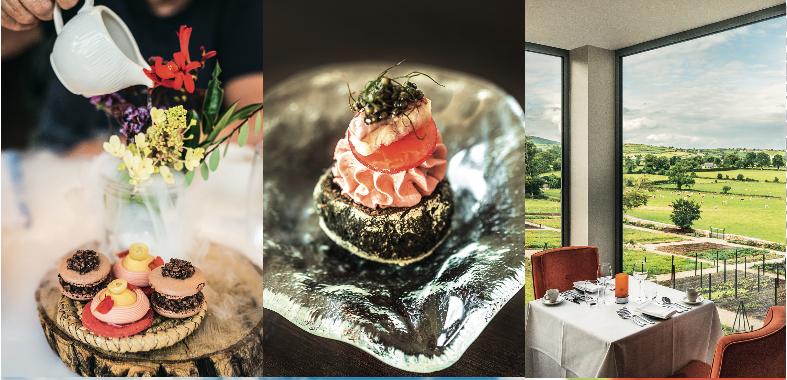
Darragh, from Galway, began his culinary career in Connemara. ‘I value local knowledge here as I did at home. We make our wheaten bread the same way as Granny Mary did years ago; I know my suppliers and visit them often, and our plates and bowls are made locally from fallen elm timber, fir bark and quarry slate,’ he explains, as a dozen longhorn-cattle graze in the meadow outside the floor- to-ceiling restaurant window, and a proud peahen keeps her tiny chicks close as they busily peck their way along a stoney path.
Longhorns can be tricky to farm as they don’t fatten easily, whereas native Dexters, though smaller, tend to be more obliging. In Castlescreen Farm, on the slopes of Slieve Croob, a 30-minute drive north-east, fourth-generation farmer Damien Tumelty uses a paddock system and frequent soil testing to maintain the pesticide- free health of his pasture-soil. ‘Dexters have been bred to live in the mountain foothills,’ he says. ‘I have 65 cows at the moment, and Krasos, our bull. We move them between six paddocks, so they can grass-feed all year.’ All butchering is done on the farm. ‘Older cows have more flavour, especially after we age their meat. We are used to doing everything ourselves,’ he adds. ‘We had no machines in the past, but it was a good life.’ A rich meadow – poppies, buttercups, meadow-grasses – also supports 100 plump, white-coated, black- faced sheep, nine well-loved goats and half a dozen fine brown pigs.
A little path made by fairies, it’s said, leads from the farm to Ballynoe stone circle, a large, early Bronze Age site of 50 upright stones, some 1.8m tall, surrounding an earth-mound where cremated bones have been excavated. A few km on, the historic county town of Downpatrick, one of Ireland’s oldest towns, said to be the burial place of St Patrick, lies to the south of Strangford Lough. The road north passes 12th-century Inch Abbey, built on the site of a Celtic monastery plundered by Vikings, and the ancient woodlands of Finnebrogue Estate before reaching the lovely area of Killinchy.
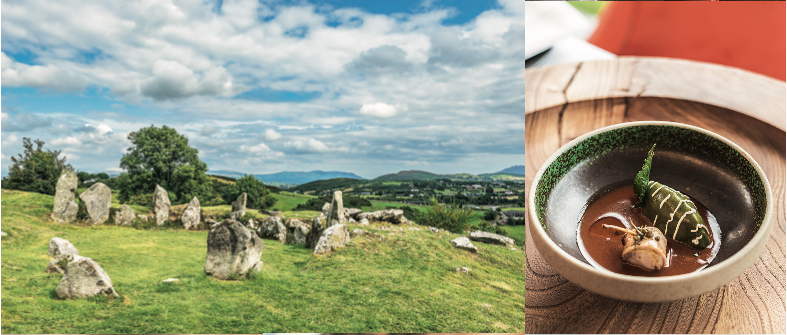
There are more than 200 small islands and islets in Strangford Lough, an Area of Outstanding Natural Beauty 30 minutes’ drive from Belfast. ‘It’s sea-tidal, with millions of gallons of water passing through The Narrows every day; if you’re caught in the outgoing tide, local wisdom has it you’ll wash up on the Isle of Man,’ smiles master bread maker Tracey Jeffery. ‘We also have the best climate here – we grow early Comber potatoes and many food plants that can’t grow well elsewhere.’ In her large farmhouse kitchen, Tracey deftly prepares soda bread dough, folds it into a ball and flattens it between her palms. ‘Soft Irish wheat flours mixed with buttermilk create a fluffy texture’, she explains, as she cuts the dough into farls and cooks each one on a hot stove-top griddle for a few minutes. ‘Tap the farl – if it sounds hollow, it’s done; then ‘harn the farl’ – an Ulster Scots’ term for standing it on each side like a bookend for a few seconds – to lightly brown.’ Slathered with deep-golden local butter and homemade rhubarb and ginger jam, they’re delicious.
Belfast singer Van Morrison famously used to holiday with his family on the fine, sandy beaches of the east County Down coast, his experiences reflected in his lyrics. At low tide, talented, local-born chef Paul Cunningham, owner of Scopers, in Dundrum, searches these same beaches for mussels, sand eels, cockles and whelks. ‘My father taught me how to forage and fish – he insisted I eat every part of the fish and use the bones for stock,’ he says. ‘Paddy, my grandfather, took me rabbit hunting, and collecting wild garlic, hoary bittersweet, ground elder, nettle shoots and wood sorrel. He always said, “Respect the land and it will respect you back,” and I’ve learnt just how right he was.’ For his appropriately named Mourne Larder, Paul makes jams from wild fruits and salads from wild greens and herbs. His umami-infused dishes use foraged mushrooms instead of soy, and he preserves fish and shellfish.
Artists of all kinds have been inspired by the Mournes and the loughs and wetlands of this complex and alluring land. For the writer CS Lewis, they inspired The Chronicles of Narnia, a realm of mythical beasts. But the last word goes to Van Morrison who, in Coney Island, describes: ‘Coming back from Downpatrick... Stop off at Ardglass for a couple of jars of mussels and some potted herrings in case we get famished before dinner/On and on, over the hill and the craic is good... Wouldn’t it be great if it was like this all the time?’

Where to stay
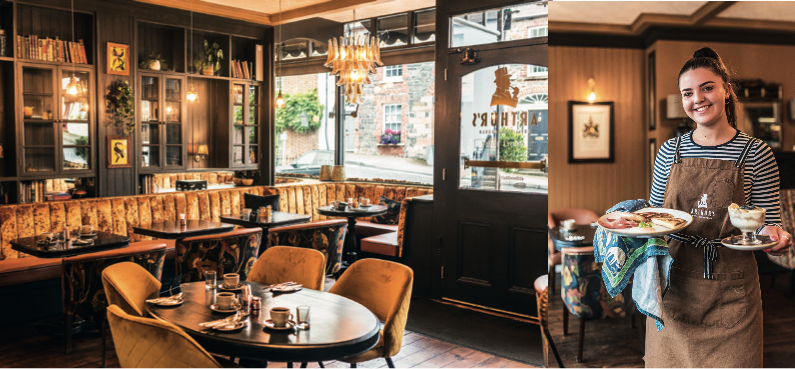
Arthur’s Hillsborough A quiet, comfortable 12-room boutique hotel, each room decorated to an aspect of the life of 17th-century politician Colonel Arthur Hill, centrally located next door to imposing St Malachy’s Church and just along from the town’s handsome Georgian square and courthouse. Breakfast in the charming café on porridge, granola or bircher muesli and fresh fruits, eggs Benedict, Lord Downshire’s Ulster fry or the smaller wee fry. Doubles from £135. 4-6 Main Street, Hillsborough, 028 9244 0751, arthurshillsborough.com
Avoca Hotel At the southern end of town, across from Newcastle
promenade, there are views of the Irish Sea and the Mournes are only
a few km away. The ground floor is a large bar with an outside beer
garden and live music each weekend. Buffet breakfast at the bar includes
yoghurts, fresh fruit compote, freshly baked croissants or a ‘full Irish’ –
bacon, sausage, beans, tomato and potato farls. Doubles from £150.
93-97 Central Promenade, Newcastle, 028 4372 2253, avocahotel.com

Killeavy Castle Estate Live life in the slow lane in this handsome
contemporary hotel and spa at the centre of 147 hectares of mixed farm
and woodland in the lovely, undulating foothills of Slieve Gullion. Guest
rooms here, or in the restored castle or large individual residences on the
estate, overlook the walled kitchen garden, meadows or woods. Belfast
is an hour away by car and Newry, ten minutes. Dine in the light-filled
dining room or Bistro Bar, and take afternoon tea on the terrace. Doubles
from £229, including breakfast. 12 Ballintemple Road, Killeavy, Newry,
028 3044 4888, killeavycastle.com
Slieve Donard Victorian grandeur and modern comfort mix well in this
landmark, 125-year-old, 180-room, restored hotel lying on the northern
side of Newcastle Bay. Many of the rooms have views over the Irish Sea,
others of the nearby golf course, sandy beaches and the magnificent
Mourne Mountains. Dine in historic JJ Farrall’s, named after the hotel’s
19th-century architect, or Lighthouse Lounge, with its fine views across
the bay to Newcastle and the mountains; while it’s The Wolf bar for
cocktails and snacks. Breakfast is a buffet, with à la carte and traditional
Irish dishes of locally sourced bacon, sausages, black or white pudding
and soda breads. Doubles from £215, including breakfast. Downs Road,
Newcastle, 0284 372 1066, marineandlawn.com/slievedonard
Travel Information
The Mourne Mountains lie in south County Down, one of the six counties of Northern Ireland and the nine counties of the Province of Ulster. It covers 2,490sq km and has a population of around 532,000; the county town is Downpatrick, population approx. 11,000. The Irish Sea lies on its eastern border, the Republic of Ireland is to the south, County Armagh to the west. Its northern border includes the eastern suburbs of Belfast.
GETTING THERE
EasyJet fly daily from London and most UK regional airports to Belfast
International Airport. Flights take just over 1 hour. The Mourne Mountains
are some 80km south of Belfast. easyjet.com
British Airways offer daily flights from London Heathrow to Belfast City
Airport. britishairways.com
GETTING AROUND
Car hire is the best way to access back roads, mountains and coastline.
You can collect a hire car at either airport. enterprise.co.uk hertz.co.uk
RESOURCES
Discover Northern Ireland is your go-to for information on County Down,
including the region’s produce, history, architecture, local customs and
beaches. discovernorthernireland.com
Visit Mourne Mountains provide plenty of detail on the historic Mourne
Mountains region. visitmournemountains.co.uk
Where to eat

Prices are per person for 2 courses with 1/2 carafe of wine, unless stated
Brunel’s Restaurant Spacious dining room in a historic house with
friendly staff and a well designed wine, cocktail and spirits list. Locally
sourced starters are along the lines of chicken liver parfait with plum
chutney, or seafood chowder; mains might be pan-roasted salmon with
samphire or beef daube with seasonal greens, or the day boat special;
finish with an Irish cheeseboard, including delicate, washed-rind
Milleens, Tipperary brie and quince jelly. Book ahead. From £40.
32 Downs Road, Newcastle, 028 4379 8277, brunelsrestaurant.co.uk
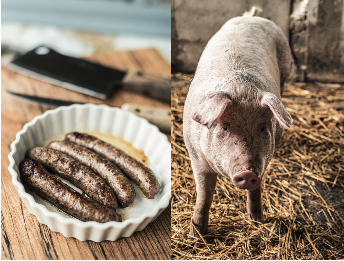
Gullion at Killeavy Around 90 per cent of the food executive
chef Darragh Dooley serves is either estate-sourced or from within
32km, and producer details are given on his menus. He ages estate-
produced Longhorn beef, cures bacon, and dries herbs and garden
flowers on site. Seasonal tasting menus might include air-dried beef with pear and pickled radish, Lough Neagh smoked eel, confit rabbit, Kilkeel crab with dulse seaweed, poached cod
fillet with redcurrants and wild asparagus, Longhorn beef fillet with garden vegetables, and scallops with smoked sea herbs, followed by soused strawberries and petits fours. Booking essential.
Four-course tasting menu £69pp. 12 Ballintemple Road, Killeavy,
Newry, 028 3044 4888, killeavycastle.com
The Mariner Bar & Restaurant Owner Fiona Davey is a veteran of
Northern Ireland’s flourishing food scene. Large, second-floor dining-
room windows overlook Newcastle’s promenade and the ever-changing
Irish Sea. Try starters of Strangford Lough mussels in local cider and
cream sauce, or seafood chowder with homemade wheaten bread;
mains might be roasted sea bass, or pasta with scallops, prawns and mussels;
finish with homemade ginger cake with rum and butter sauce or perhaps an
Irish coffee. The short wine list is well priced and there are beers, herbal teas,
cocktails and mocktails too. From £32. 59 Central Promenade, Newcastle,
028 4372 5700, themarinernewcastleni.co.uk
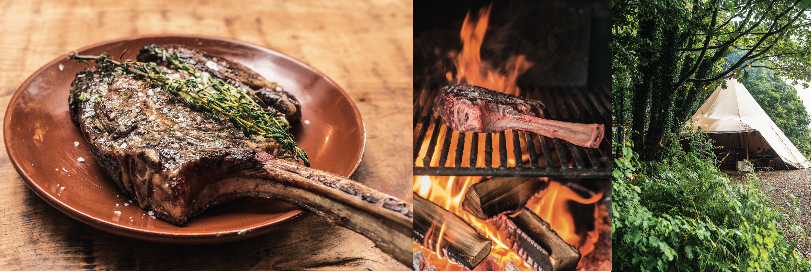
The Parson’s Nose A restaurant and expansive beer garden behind a popular
pub on Hillsborough’s attractive, historic high street. Expect daily specials
such as goats’ curd with beetroot; cured salmon, smoked haddock and bacon
chowder; hake with saffron potatoes; pan-roasted monkfish with samphire;
dry-aged sirloin with seasonal greens; and wood-fired pizza with a variety of
toppings. Crusty wheaten bread is made on the premises every day. There’s
a short, helpful wine list along with a selection of gins, whiskeys and draft
and Irish craft beers from a well-stocked bar. From £32. 48 Lisburn Street,
Hillsborough, 028 9268 3009, ballooinns.com
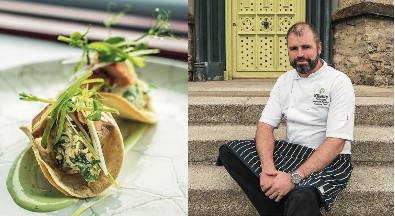
Scopers A ‘Hot Food Bar’ with a picnic area outside – or take your meal to
the beach across the road. A short, constantly changing menu of fine, local
produce is cooked by acclaimed chef Paul Cunningham. Expect good-value
dishes like battered smoked haddock with cider mayo; Dexter burger with
onion purée; buttermilk chicken; veggie Cornish pasty filled with hay-baked
celeriac; and unusual specials like mussel popcorn with pickled seaweed,
or carrots in sea buckthorn caramel. Drinks include fresh fruit juices, craft
beers and teas. Irish and other breads are made by Paul each week and
popular pop-up meals feature foraged and locally grown Mourne Larder
ingredients. Usually open Thursdays to Sundays, but check social media
for the latest opening times and supper-club dates. Plates from £4.50.
169 Main Street, Dundrum, Newcastle, 028 4375 8436
Food Glossary
- Bannock
- Daily bread of oatmeal or barleymeal and buttermilk or water, cooked in a stove-top skillet
- Champ
- Potato mashed with milk and butter combined with chopped spring onions or spring greens
- Irish coffee
- Strong coffee, Irish whiskey and sugar topped with a thick layer of cream
- Poitín
- Known in English as poteen or Irish moonshine, this ancient farm-based spirit is made from grain, whey, sugar beet, molasses and potatoes and distilled in a small pot-still or pota (‘pot’). It’s now made commercially under licence
- Potato bread
- Made with well-seasoned, mashed potato – floury ones like maris piper or russets are best – and plain flour, the bread is cut into farls
- Samphire
- This low-growing succulent plant is salt-tolerant and grows on rocks (rock samphire) or in marshes (marsh sampire); its salty, lemony flavour complements fish and seafood dishes
- Sea, or Irish, moss pudding
- A junket-like pudding made by boiling Irish moss seaweed with milk and sugar until thickened and set
- Soda bread
- Quick-to-make, no-yeast bread made with buttermilk and wheat flour, traditionally baked on a griddle
- Ulster Fry
- Sausages, bacon, eggs, black or white pudding (see below), soda bread, potato bread and, sometimes, grilled tomato or mushrooms; a smaller version is called ‘wee fry’
- Wheaten bread
- Filling and flavourful, made with coarse wholemeal flour, buttermilk and often Guinness or treacle
- White pudding
- Oatmeal, pork and spices shaped into a sausage which is then sliced and fried for breakfast
Get Premium access to all the latest content online
Subscribe and view full print editions online... Subscribe

